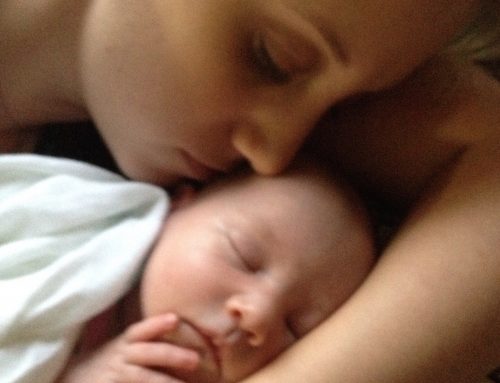Over the last 25 years it has been noted that the incidence of children with neuro-developmental and psychopathological issues have increased significantly, with boys dominating the numbers. 1
Why mostly boys?
Right from time inside the womb boys’ brains develop more slowly than girls.2
Even in the first hours after birth, observational studies have shown that, in comparison with girls, male newborns tend to be less responsive to their mother’s voice and touch, and are less able to maintain eye contact with her. In the early weeks to beyond six months, they smile less and cry more, are more irritable and demanding and show less emotional stability.3
In essence, on average male babies have greater difficulty self-regulating their emotional state and therefore have a greater reliance on emotional support, especially from their mother. They need it both more intensely and for a longer period than girls.4
The slower development is likely to be due to the influence of the male hormone testosterone.5, 6. It is known that the sex hormones (testosterone in boys and oestrogen in girls) have a direct influence on the neural wiring and synaptic connections in the brain especially during critical periods of their development both pre- and postnatally. These hormones also have an important influence on the development of the stress response from cortisol, with oestrogen enhancing its activity and responsiveness (enhancing resilience to stress) and testosterone inhibiting it (increasing fearfulness) 7.
For young children usually (and ideally) a mother’s nurturing influence predominates in the first year. As the immature human brain goes through its explosive growth, in 3 months before and the months following birth, the neural connections are made mostly in the right side of the brain – the emotional side. The mother responds (also through the right side of her brain), with her baby using her facial expression and eyes, her touch, voice, smell and vision. This powerful reciprocal interconnection provides the baby with loving support, and guidance on stress control and emotional regulation.
In the second year the father figure’s influence starts to become more important. This mostly emanates from, and is received by, the left side of the brain – the cognitive side. They teach their child to explore their emerging executive functions and to control their aggression.8
And when things go wrong in these early years, boys and girls manifest it in different ways. Girls tend to internalise their unhappiness, tending to depression and anxious over-vigilance, whereas boys manifest it externally by becoming aggressive and angry. 9
And as boys’ brains are more immature for longer their neurodevelopment is more vulnerable than girls to negative and non-nurturing influences for a longer time.
A powerful negative factor seems to be early day-care. Separating babies from their families in early weeks and months (six weeks is common in the US) has been shown to have a significant effect even when the care is ‘good quality’10, and the effects last into late childhood and adolescence 11. Such ‘separation stress’ is also accentuated in boys.
A major longitudinal study of UK population using the British Cohort Study of 1970 by the London School of Economics concluded: ‘The most important predictor of adult life satisfaction was child’s emotional health and secondarily their conduct. Least powerful was their intellectual development.’ 12
So, if you want your little boys to grow up feeling secure and with good mental health, keep them close and allow them to remain babies for longer. This may be inconvenient and require financial sacrifice but this investment in their lives pays back massive dividends to them as they grow.
See more in ‘Baby On Board’ (Expanded Edition) 2020. https://booktopia.kh4ffx.net/yM9NB
Refs:
1) https://www.cdc.gov/childrensmentalhealth/data.html
2) Thordstein M1, Löfgren N, Flisberg A, Lindecrantz K, Kjellmer I. “Sex differences in electrocortical activity in human neonates.” Neuroreport. 2006 Jul 31;17(11):1165-8.
3) Weinberg MK1, Tronick EZ, Cohn JF, Olson KL. “Gender differences in emotional expressivity and self-regulation during early infancy.” Dev Psychol. 1999; 35(1):175-88.
4) Tronick, E. (2007). ‘The Norton Series on Interpersonal Neurobiology. The neurobehavioral and social-emotional development of infants and children’. New York, NY, US: W W Norton & Co.
5) Bingham B1, Wang NX, Innala L, Viau V “Postnatal aromatase blockade increases c-fos mRNA responses to acute restraint stress in adult male rats.” Endocrinology. 2012 Apr;153(4):1603-8. doi: 10.1210/en.2011-1749.
6) Bergman K1, Sarkar P, Glover V, O’Connor TG. “Maternal prenatal cortisol and infant cognitive development: moderation by infant-mother attachment.” Biol Psychiatry. 2010 Jun 1;67(11):1026-32. doi: 10.1016/j.biopsych.2010.01.002.
(7) Hines M, Constantinescu M, Spencer D “Early Androgen Exposure and Human Gender Development in ‘Biol Sex Differ’ 2015; 6:3.
(8) Schore, A. ‘All our sons: the Developmental Neurobiology and Neuroendocrinology of Boys at Risk: Infant Mental Health Journal. 2016. 38. 10.1002/imhj.21616.
(9) Gunnar MR et al. ‘The Rise in Cortisol in Family Daycare: Associations with Aspects of Care Quality, Child Behaviour and Child Sex’. Child Dev 2010; 81(3): 851- 869.
(10) Belsky J, Vandell DL, Burchinal M, Clarke-Stewart KA, McCartney K, Owen MT, et al. ‘Are there long-term effects of early child care?’ Child Development. 2007;78:681–701.
(11) Vandell DL, Belsky ‘Do Effects of Early Child Care Extend to Age 15 Years? Results From the NICHD Study of Early Child Care and Youth Development’ J Child Dev 2010; 81(3) 737-756.
(12) Layard R, Clark AE, Cornaglia F, Powdthavee N, Vernoit. ‘What Predicts a Successful Life? A Life-Course Model of Well-Being’ Econ J (London). (2014) ;124(580);F720-F738.










Leave A Comment
You must be logged in to post a comment.